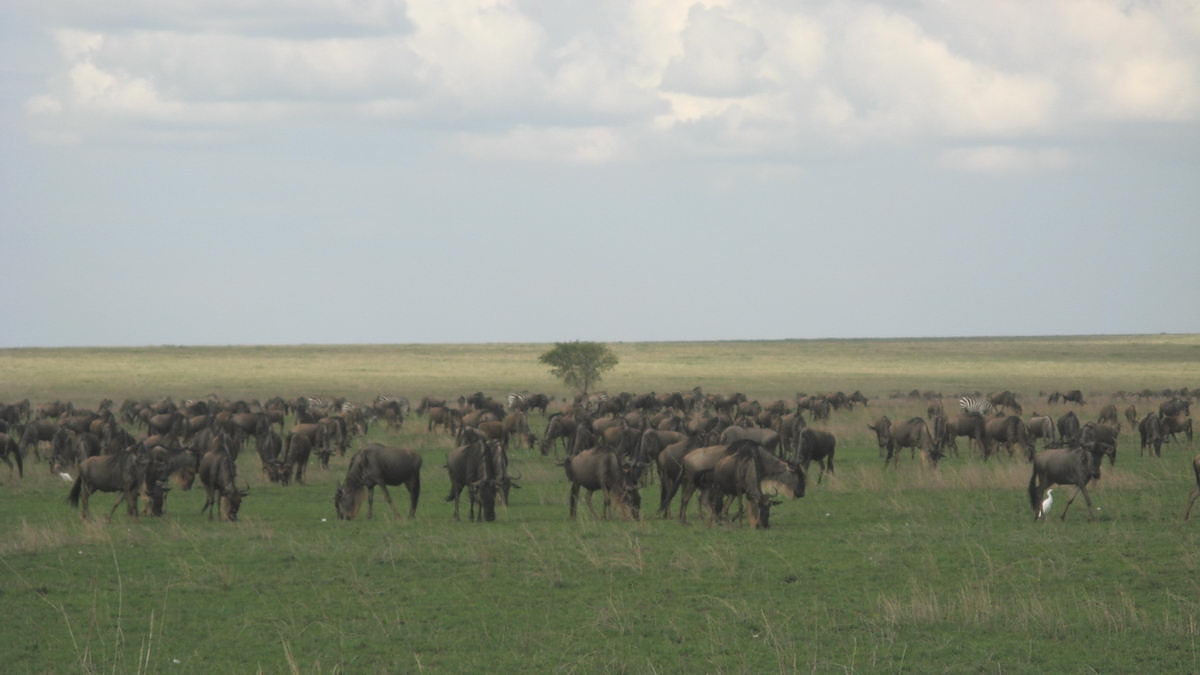When is the best time to see the Serengeti Migration
With no real start or end to the migration (moving in a constant circle), it is a pilgrimage for nearly 2 million wildebeest and thousands of zebra in search of food and water. Followed by a variety of predators (lions, leopard, cheetah, hyena etc.) makes this ‘Africa’s Greatest Wildlife Show’.
One can say the migration may start with the birth of nearly 400,000 wildebeest embarking on their own journey of survival. The herds’ movements are largely determined by the rains, which can be both unpredictable and spontaneous but vital for the herds movements and calving season.
The calving season takes place in the Serengeti National Park / Ngorongoro Crater Conservation Area from early January to late February, when nearly 80% of the wildebeest give birth over a period of a few weeks. The herds are concentrated in the Ndutu and Salei plains (southern Serengeti and Ngorongoro Conservation area) attracting the attention of predators (lion, cheetah, hyena).
From March through to mid May the herds reside in south-western Serengeti / Maswa Reserve taking full advantage of the vegetation as the young calves gain strength and grow stronger. Their second biggest challenge awaits, as they enter the Masai Mara.
The herds start moving further north into Mbalageti / Grumeti region of the Serengeti (also known as the western corridor) grazing from late May to mid July. This is one of the best times to experience the wildebeest migration in a beautiful region of the Serengeti. What better than waking up for an early morning balloon ride watching the sun warm up the day and unveiling the herds scattered across the golden plains!
BEST TIME: Early January to late February is the traditional carving season of the wildebeest

_1148_800shar-50brig-20.jpg)

_1200_800shar-50brig-20.jpg)




